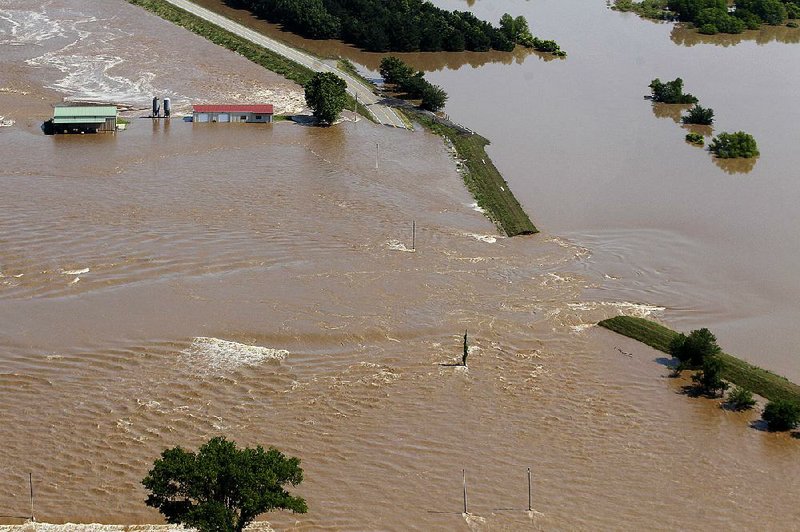VAN BUREN -- Local and state officials gathered last week in Van Buren to discuss the flood that struck the River Valley last year.
The U.S. Army Corps of Engineers, Little Rock District met with stakeholders in western Arkansas on Tuesday at the Crawford County Department of Emergency Management.
The meeting was not open to the public. A Fort Smith Regional Chamber of Commerce news release that was sent out beforehand described it as "an informal gathering of stakeholders from the 2019 Arkansas River Flood that will allow them to discuss operation and projects during flood situations with the Army Corps of Engineers."
A briefing took place after the meeting. Col. Eric Noe with the Corps said the purpose was to have a conversation about what happened with the 2019 flood and ensure that all parties involved are on the same page regarding the current situation, how to work together, what they all learned from the flood, and how to try to anticipate what they could do better in an effort to minimize any loss of life or livelihood in future events.
There was an "unprecedented rainfall event" in Oklahoma and Kansas last spring, Noe said. The rain that fell over the course of 12 days in late May exceeded the average monthly rainfall by 400% to 600%, with upwards of 20 inches of rain in certain locations. This rain hit all of the Corps' reservoirs in Oklahoma and quickly took up all the flood storage capacity in those lakes.
"Those lakes were releasing water, and had been releasing water for some time trying to maintain that flood storage and to ensure that we had some kind of capacity to try and prevent as much as possible, or mitigate as much as possible, flooding downstream while on the Arkansas River," Noe said.
Noe said the locks and dams along the river, 13 of which are on the Arkansas side of the border and five on the Oklahoma side, do not provide any flood mitigation but are only for navigation.
"I think one silver lining is that we've kind of had a lot of discovery learning of the levees and how important they are to maintain, and then how much the communities have come together to share resources, talk about the situation, and make sure that they have a good, firm idea for how they're going to move forward in addressing and mitigating risk of floods in the future," Noe said.
He said he thinks Gov. Asa Hutchinson's Arkansas Levee Task Force has been "very helpful" in identifying levees that could be rehabilitated or strengthened, in addition to other benefits.
Noe also provided examples of what must be done to prepare for the next disaster. That includes a firm assessment of the state's levee system and the individual levees.
"That levee system is very, very good to protecting our communities," Noe said. "It held up extremely well given the extreme flood conditions last year, but what we're looking forward to is make sure they're going to work in the future as well."
A packet provided by the Corps says the Crawford County Levee District is one of six levee systems operated and maintained by local sponsors and active in the Corps' rehabilitation and inspection program that sustained damage during the flood and are eligible for federal repair assistance.
The Corps' Little Rock District website says this damage led to the levee sponsor submitting a Public Law 84-99 Rehabilitation Assistance request to the district. Engineering and design funds have been received to start work on a project to return the levee system to its "authorized level of flood risk management."
Among those at Tuesday's meeting were Fort Smith Mayor George McGill, Crawford County Judge Dennis Gilstrap, and representatives from Sebastian County Emergency Management, Crawford County Emergency Management and the Arkansas Department of Emergency Management.
Gilstrap said Thursday he thought it was great for the Corps to continue coordinating with the stakeholders and talking about how there is a chance of the same type of scenario happening again, as well as working with the stakeholders to keep the levees certified and maintained.
"During the flood, when we was actually in flood conditions last year, and I reiterated this with Col. Noe ... they had boots on the ground," Gilstrap said. "They had people that was with us day and night, and I really thought the coordination during the flood was great, and for them to continue that coordination and working with the stakeholders, I think it's really a good thing."
The informational packet says that since the flood, the Corps has hosted several meetings with levee stakeholders along the Arkansas River.
State Desk on 03/08/2020
